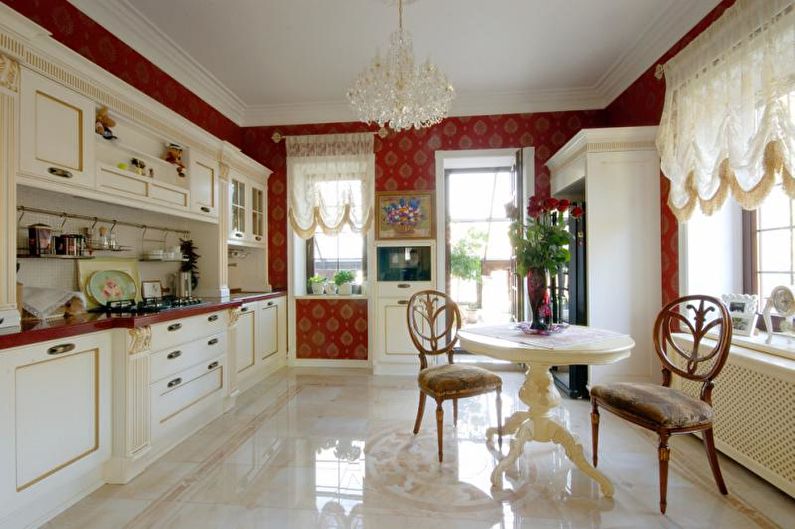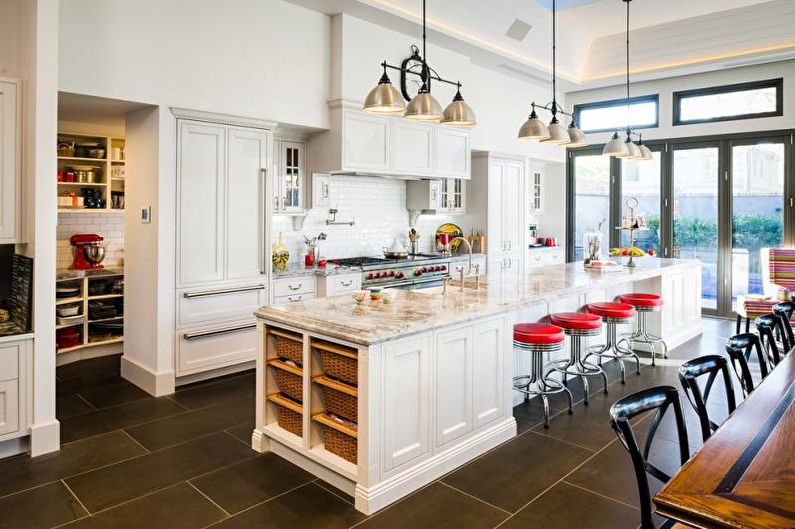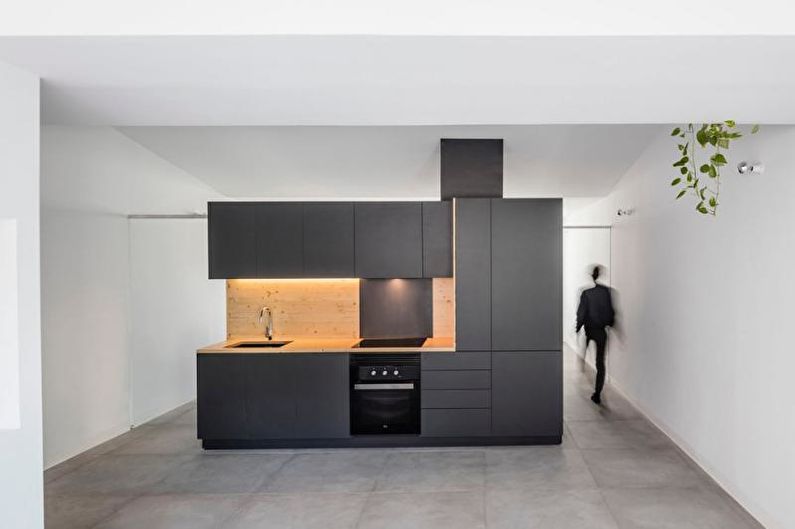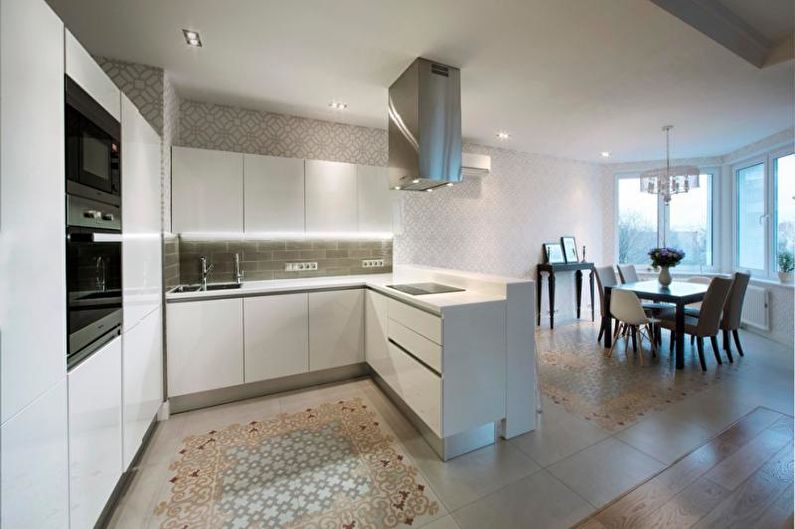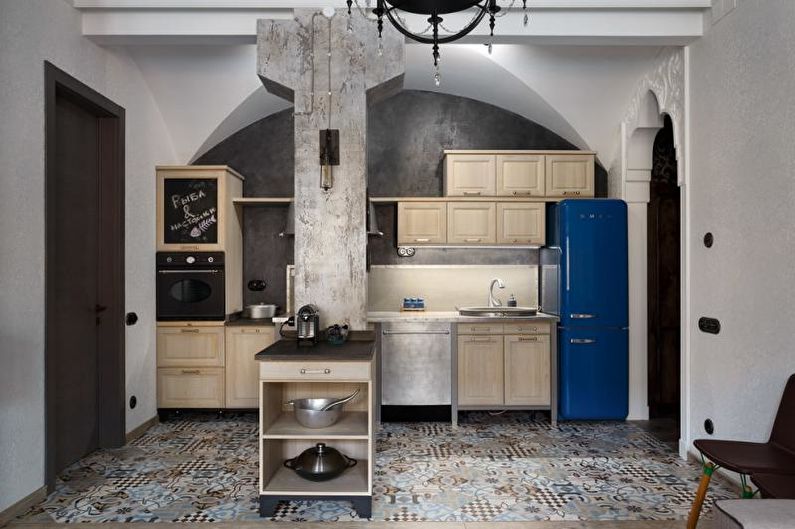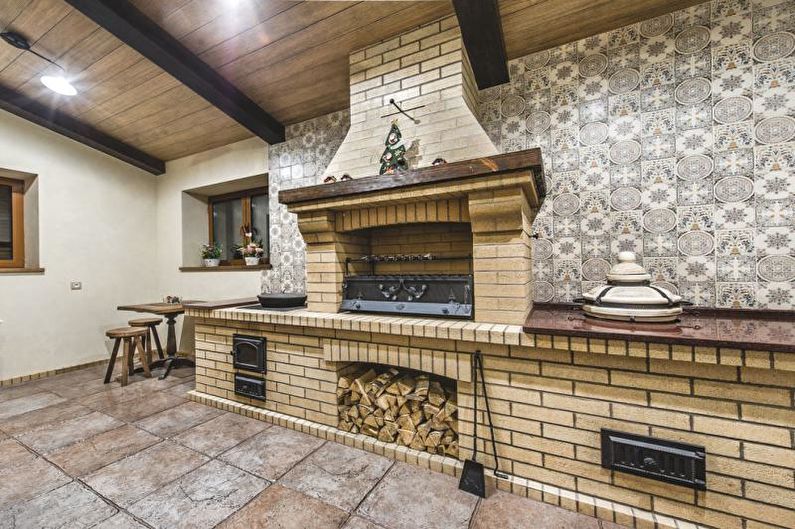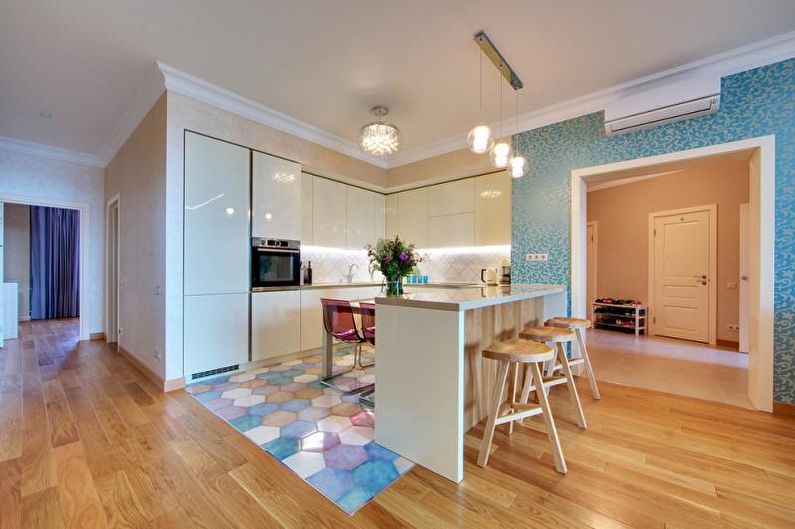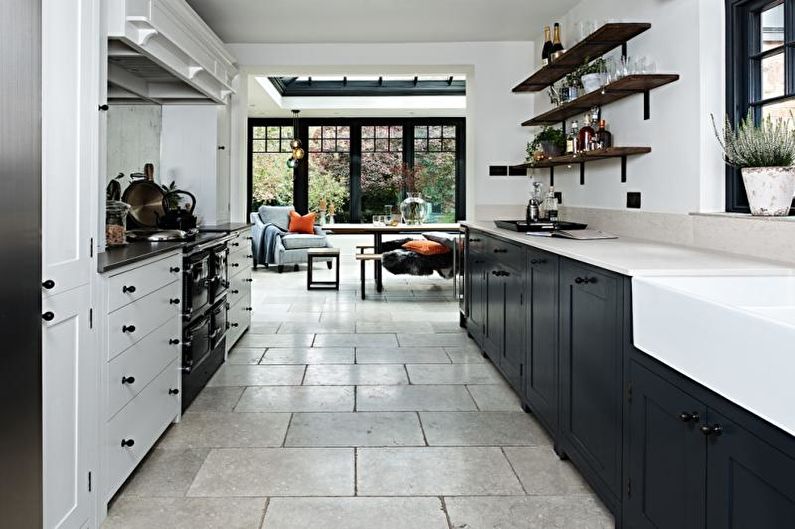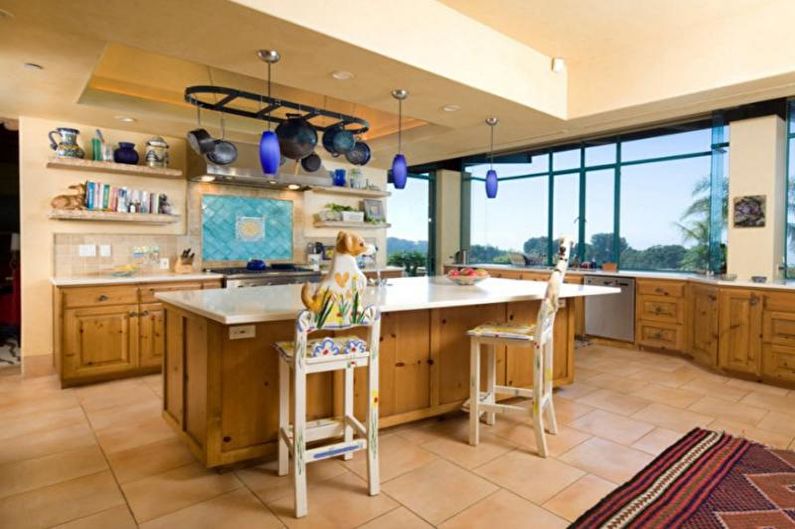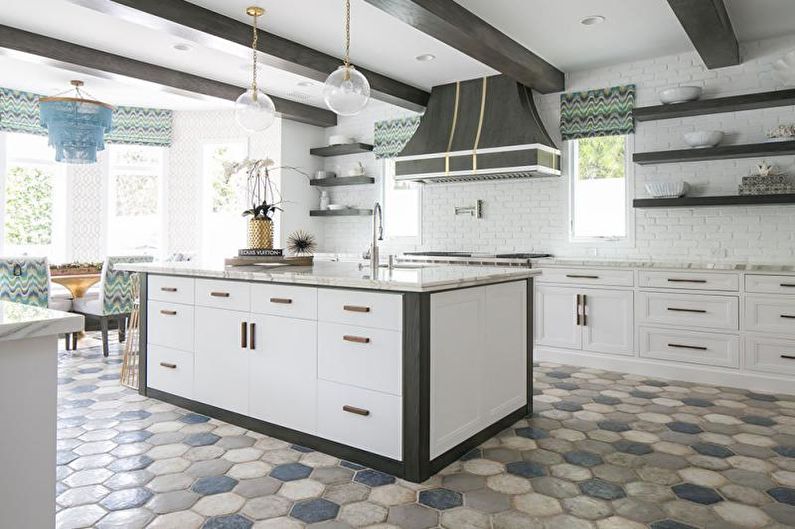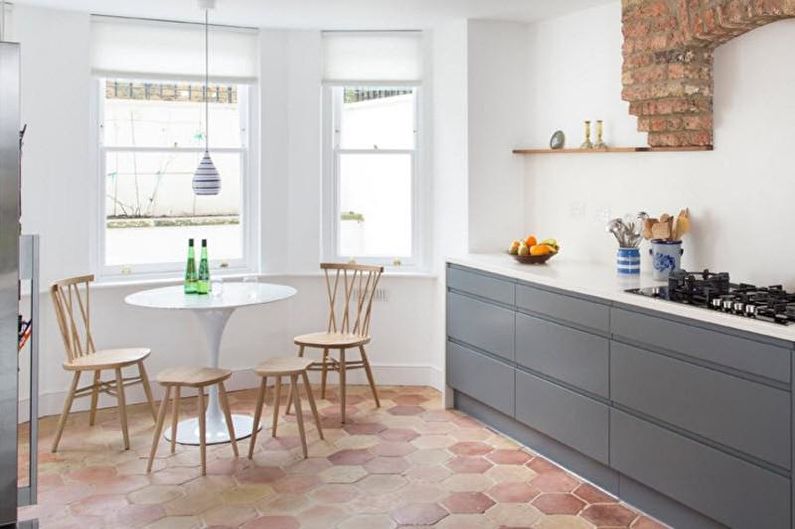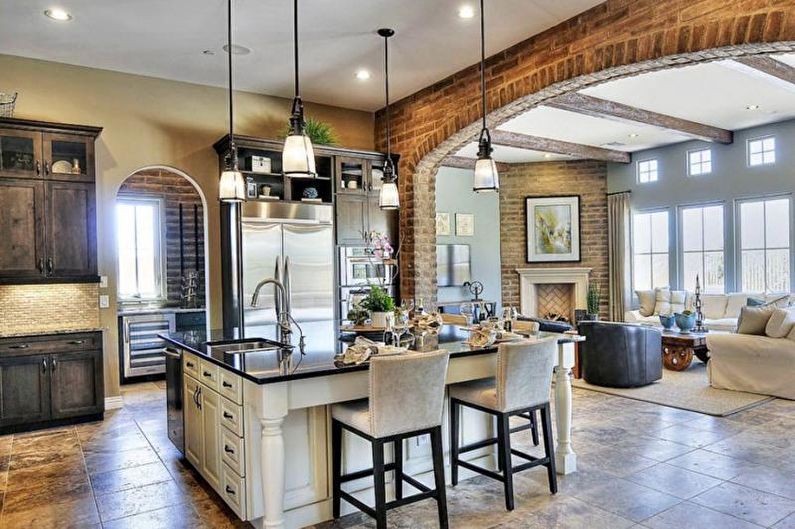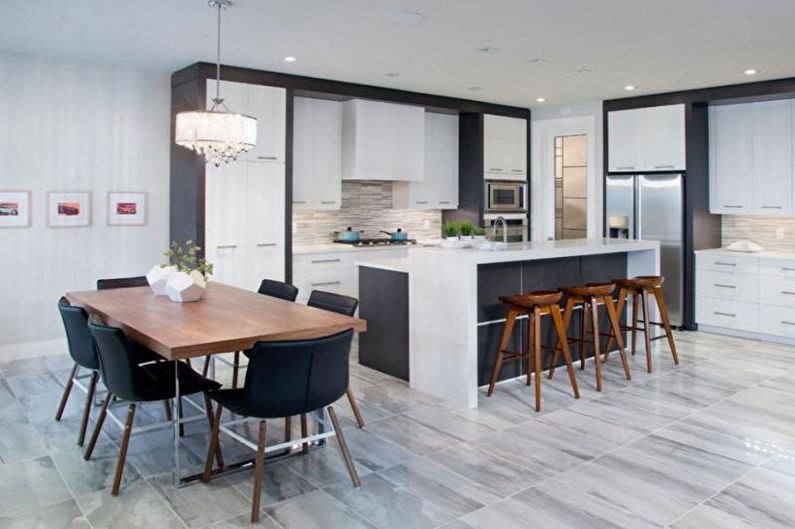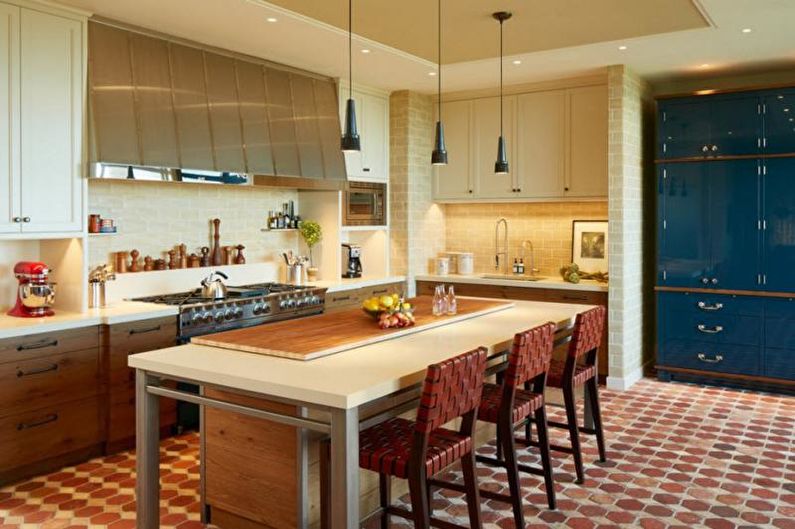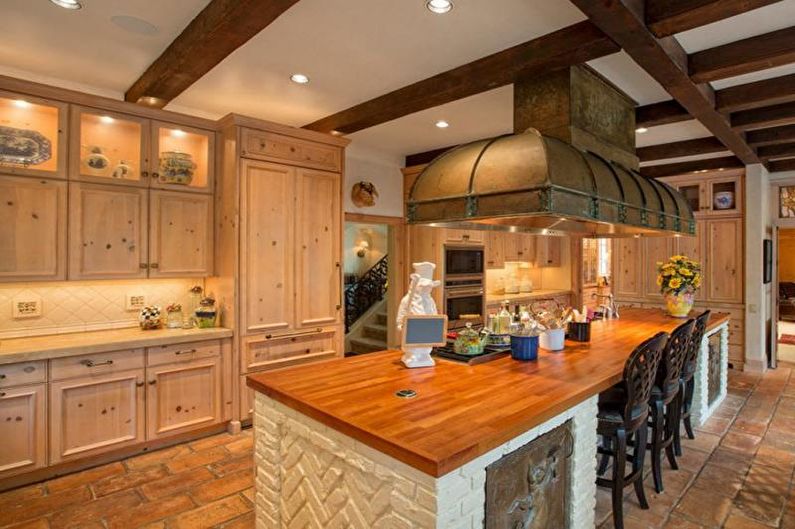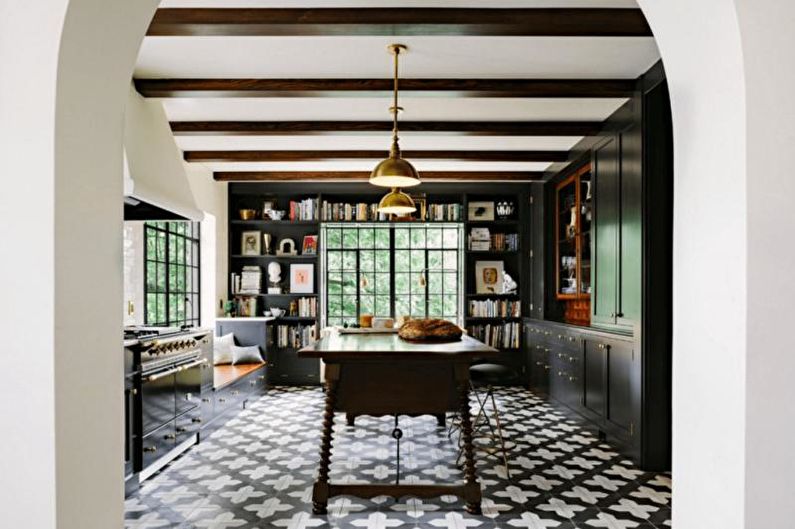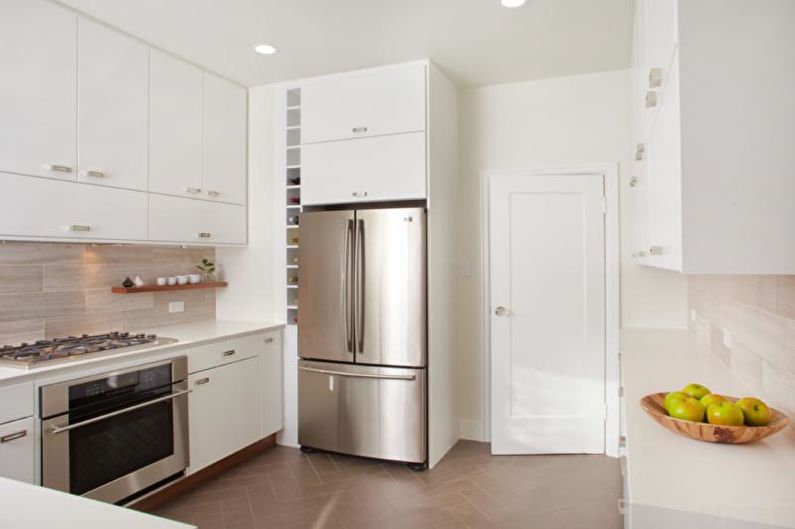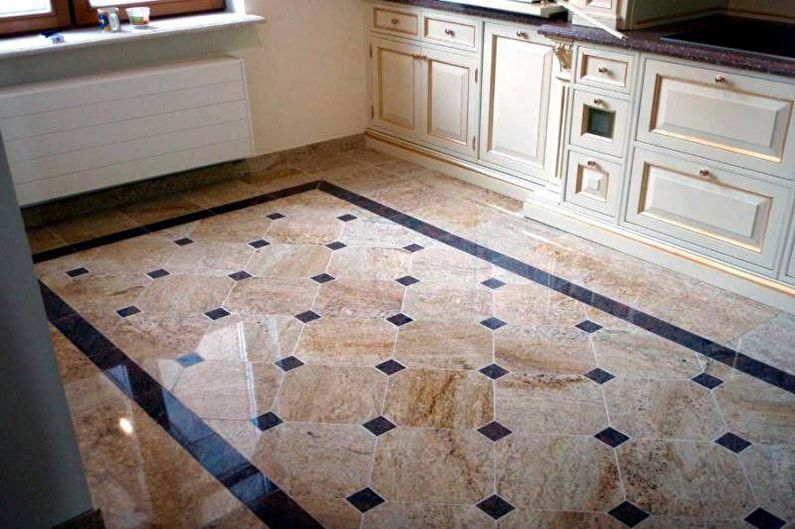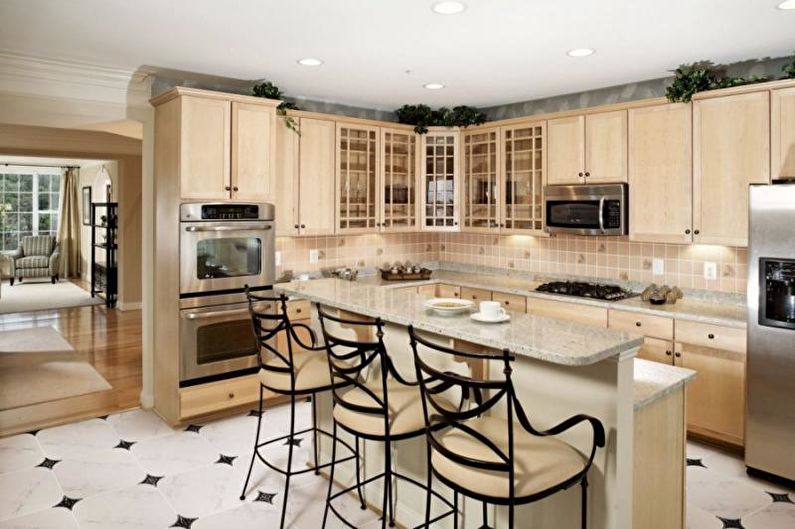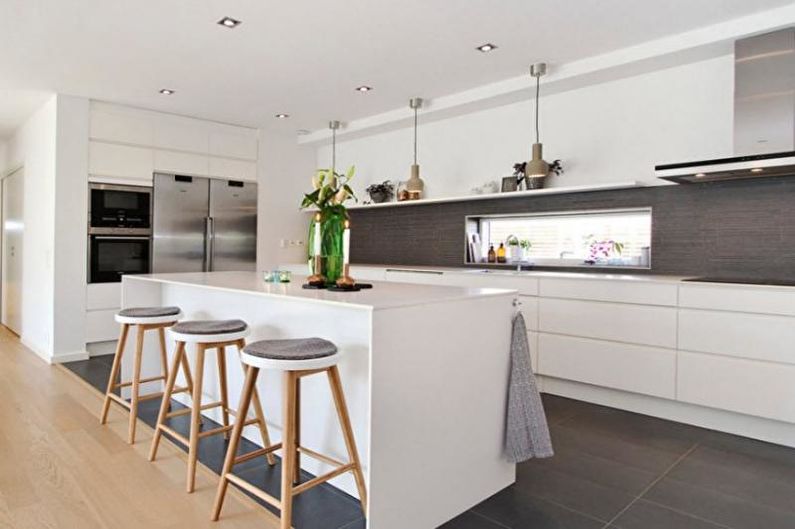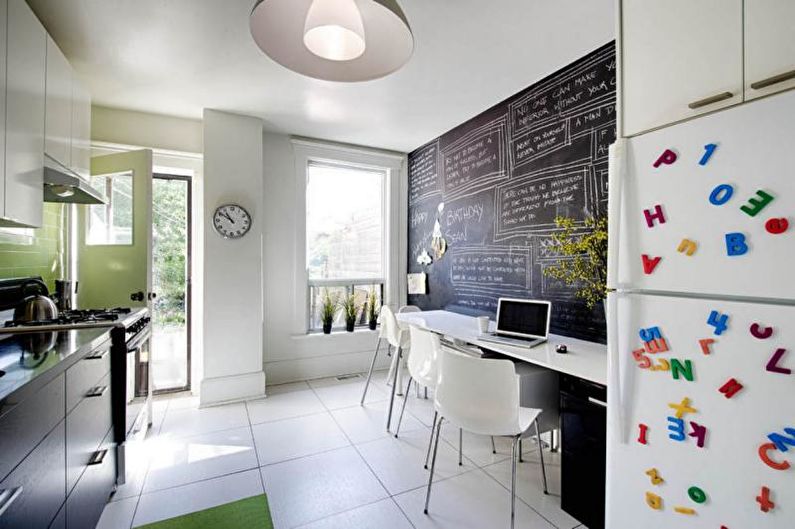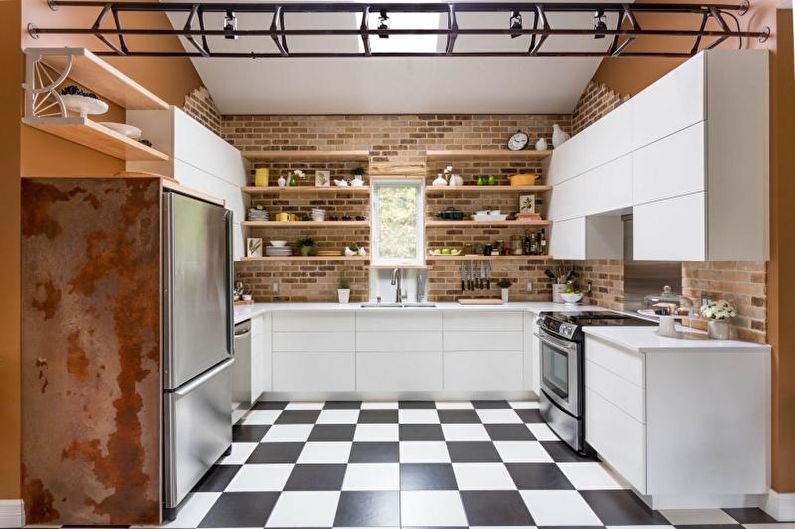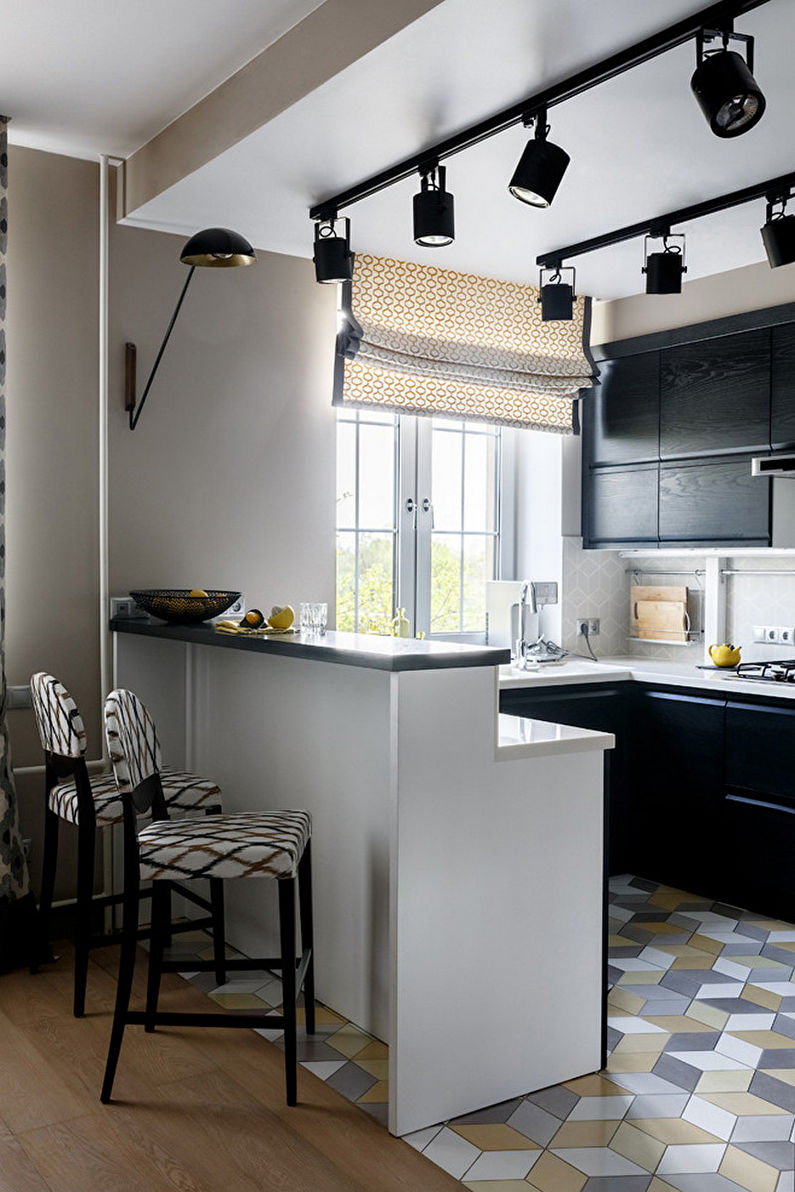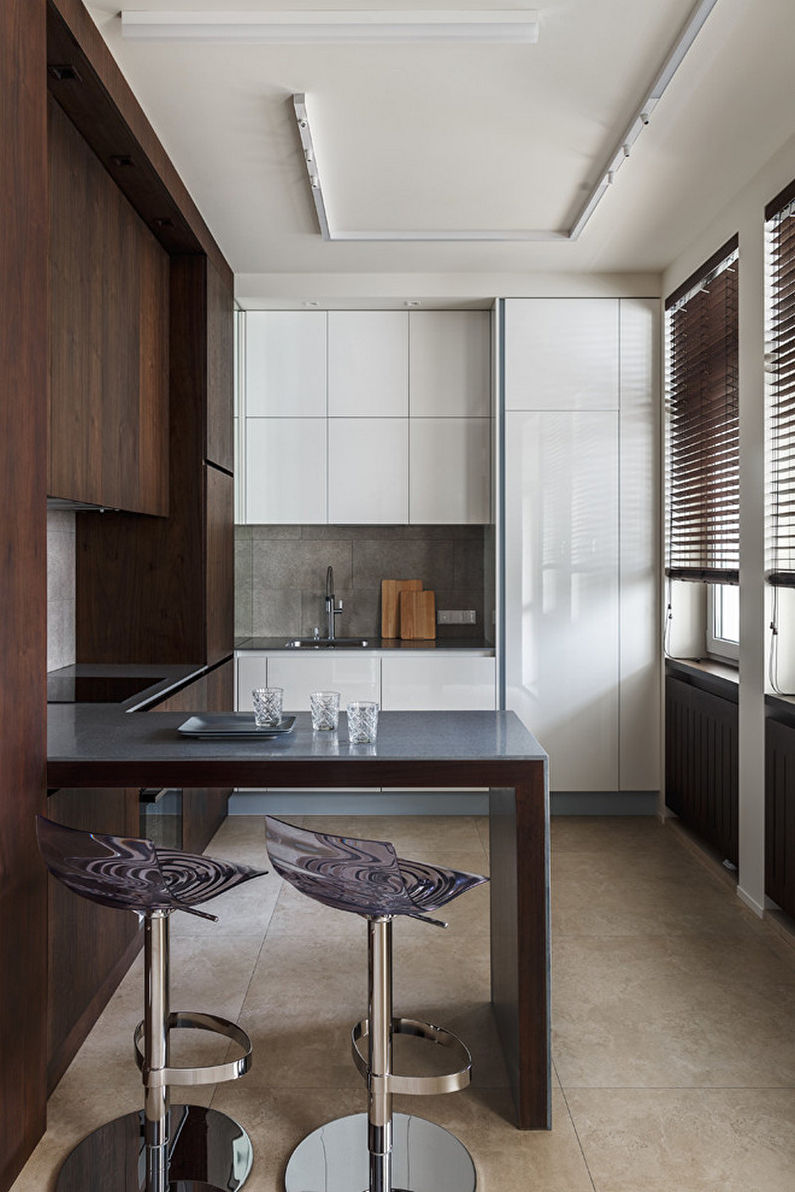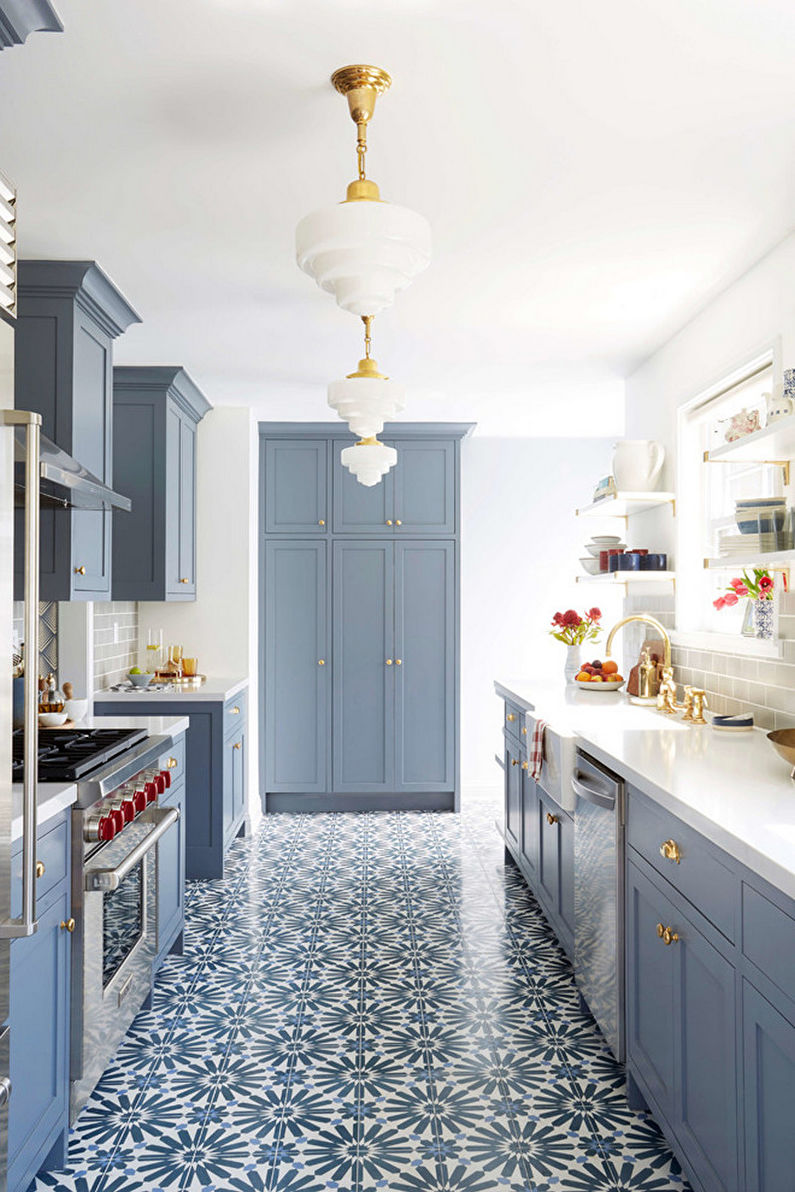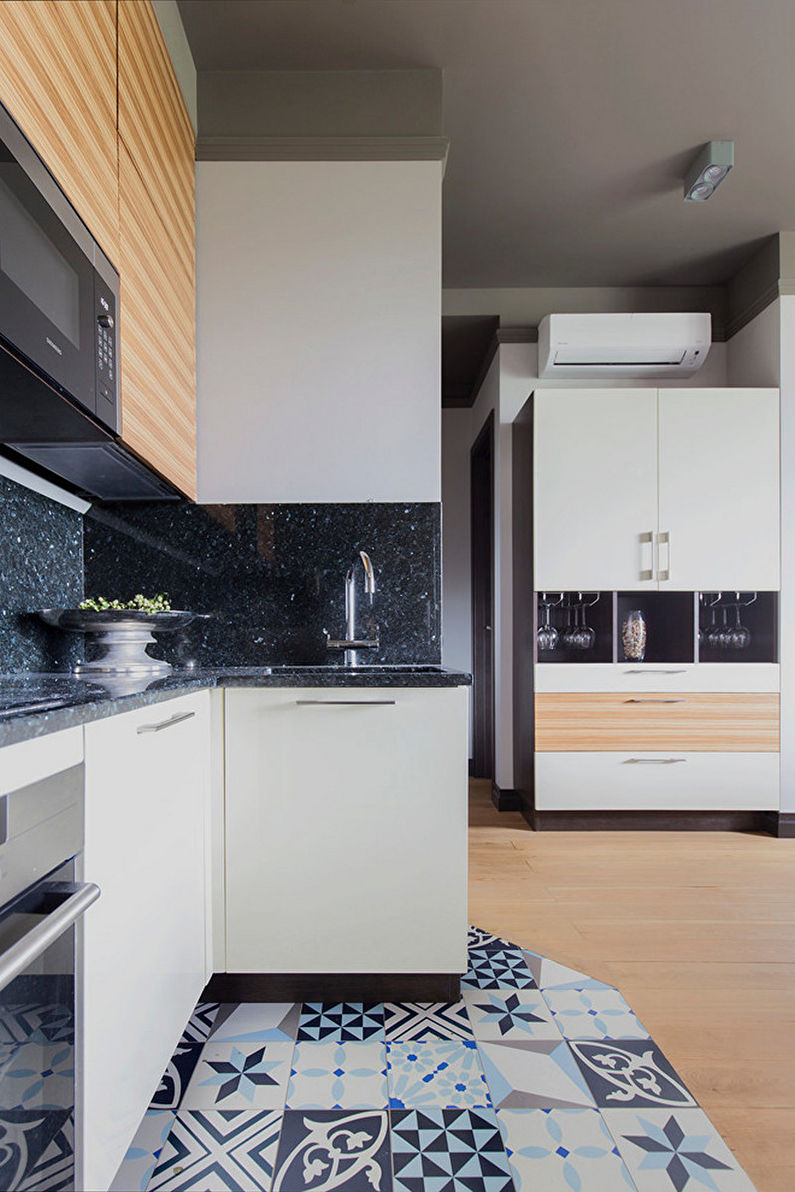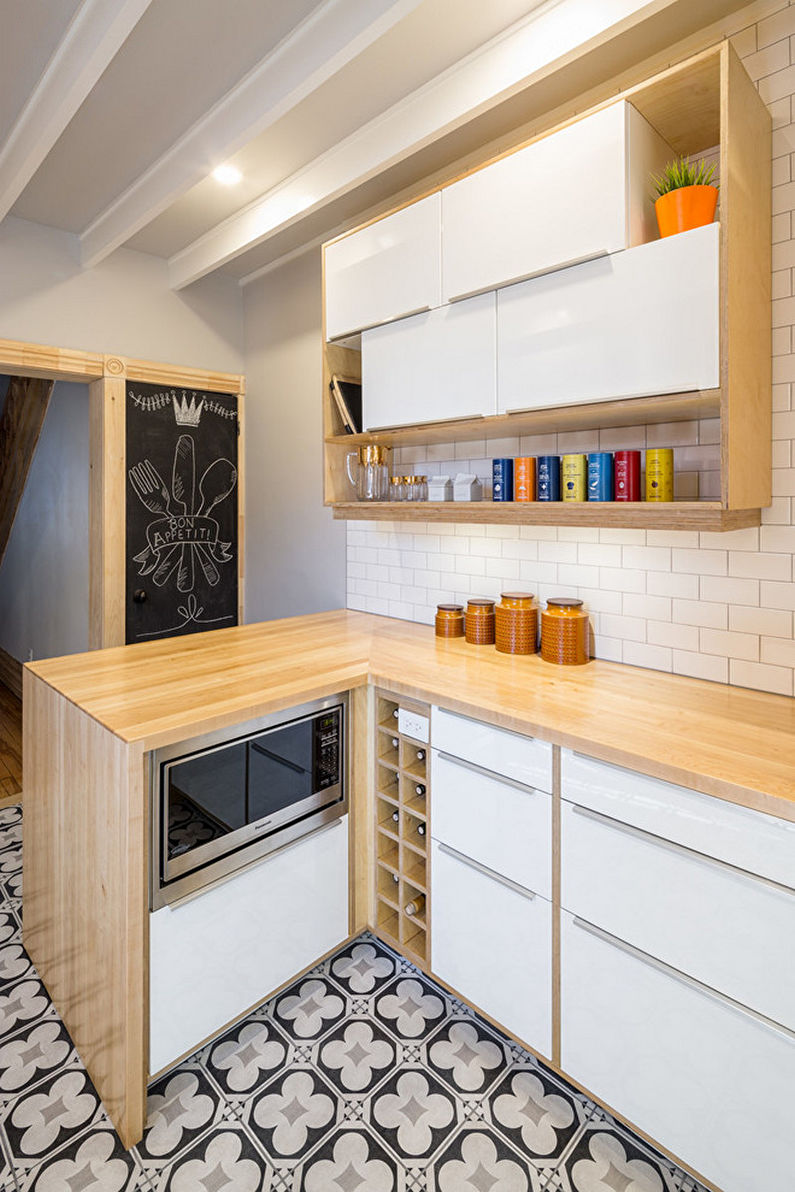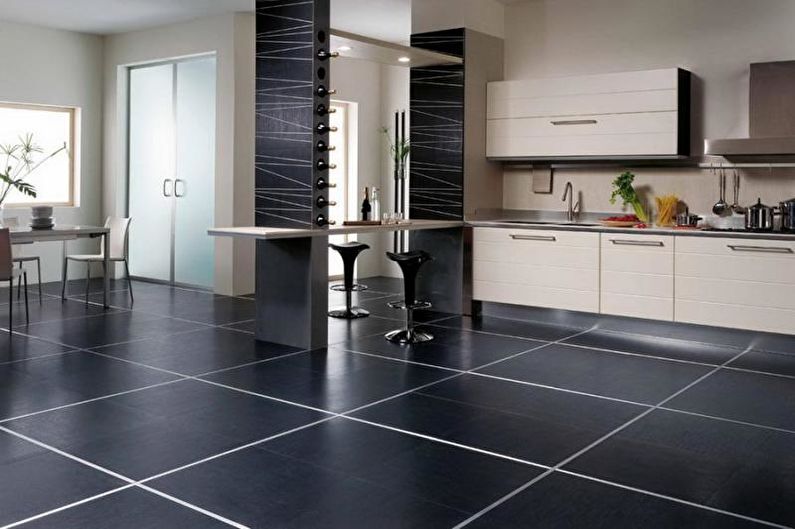
The kitchen should be equally cozy for receiving guests, romantic evenings with loved ones and family dinners with relatives. A major role in creating comfort is played by flooring. Kitchen tile on the floor is an ideal option that meets the following important criteria: resistance to mechanical damage, soundproofness, wear resistance, aesthetic appearance. Each of these features is really important for the kitchen.
Types of tiles for the kitchen
For the right choice of flooring, you should always take into account useful information, and before the purchase, and not after it. Then you can be calm and confident in a successful repair. The following types of ceramic tiles:
Pressed tile
It consists of special clay materials. The mixture undergoes transformation through compaction and formation using high pressure. Pressed tiles are particularly resistant and have a flat surface.
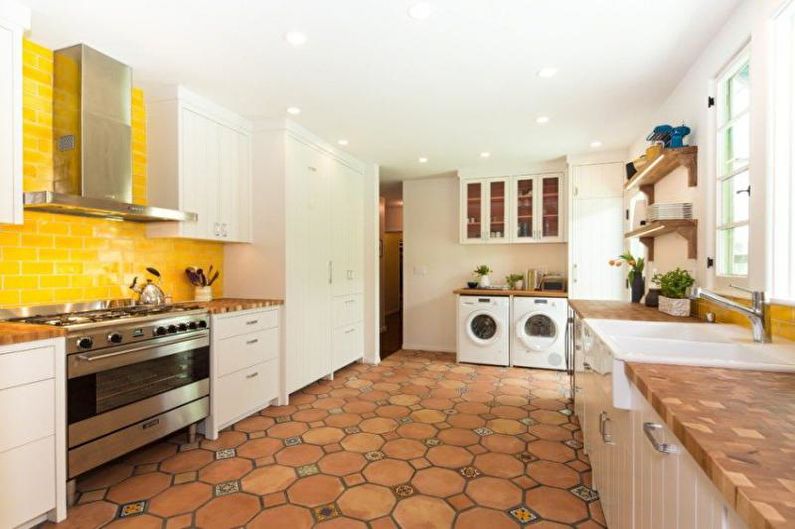
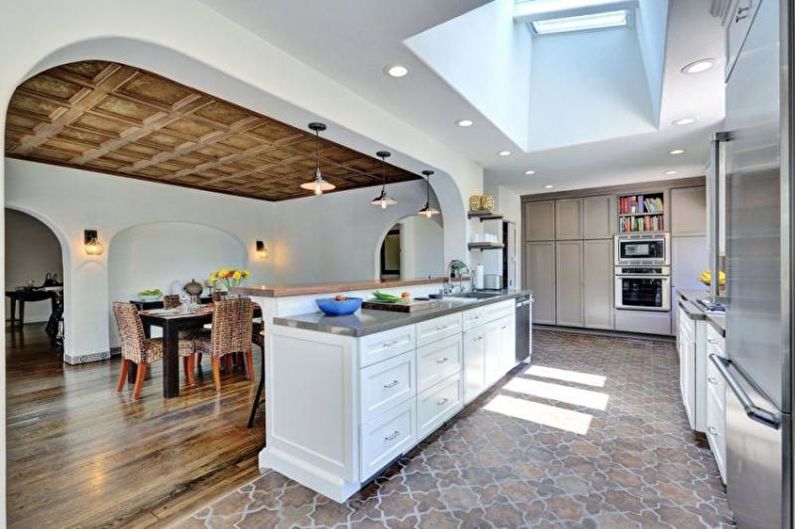
Tile without enamel
This view implies a simple design and the absence of decorative elements in the form of a picture. Such a tile looks quite aesthetically pleasing due to its uniformity and uniform thickness.
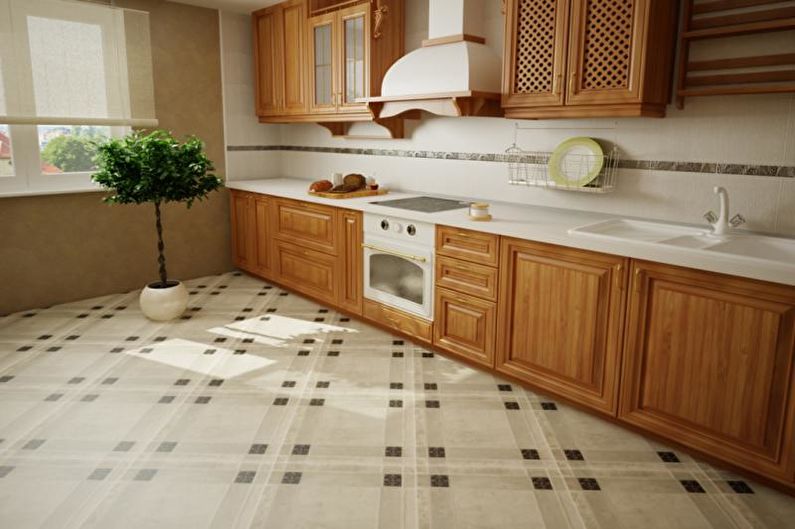

Glazed tiles
This option will appeal to connoisseurs of shine and color, which is clearly visible on the glazed surface. In addition, this type of tile is characterized by pore impermeability, hardness and density.
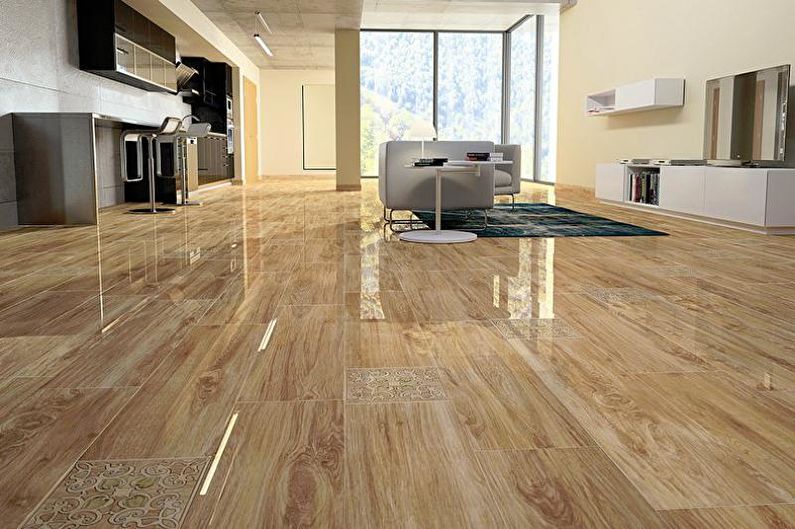
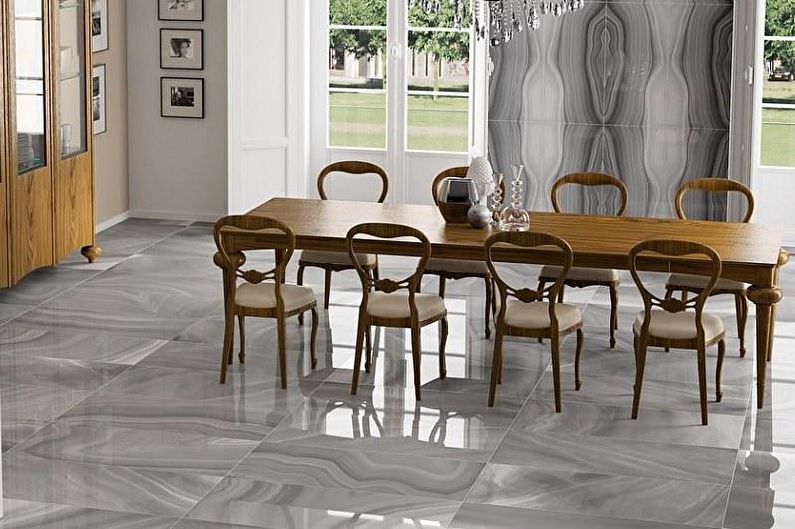
Brick tile
It consists of a variety of certain types of clay, special dyes and flux. It is highly resistant to chemical and mechanical stress.
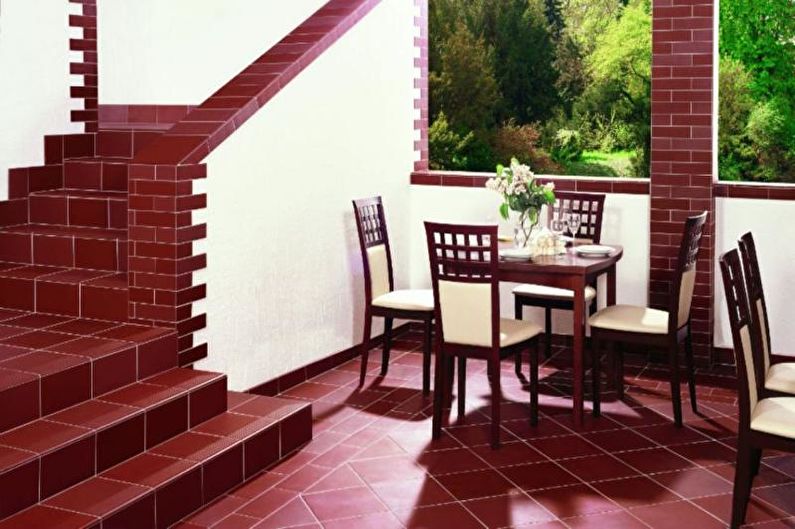
Metlakh tile
A single firing, the absence of a glazed surface and a high pressing process are the main characteristics of metlach tiles. It is quite popular not only because of its technical properties, but also due to its elegant appearance.
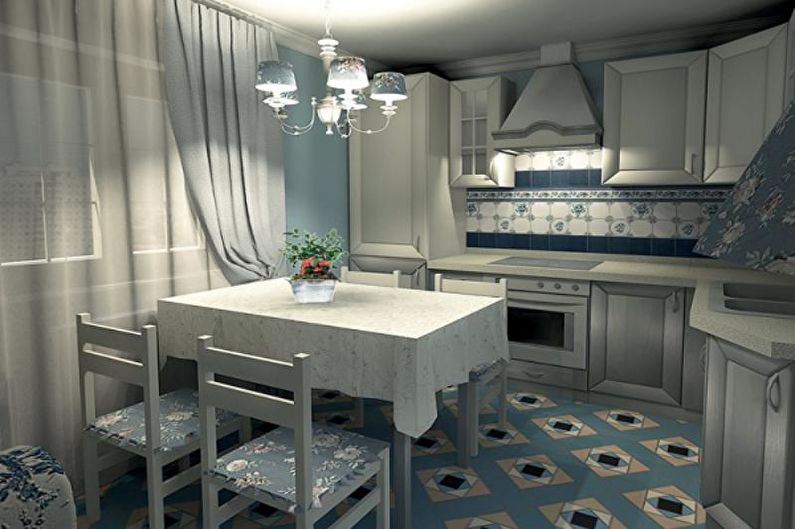
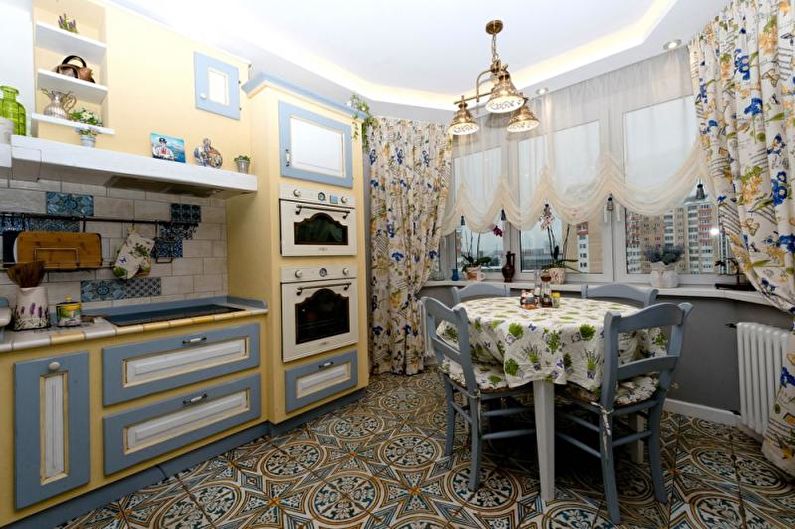
Porcelain Tile
It is made from special spars, kaolin, quartz and pressed dough. This combination creates a uniform mass, good strength and appearance that resembles a glass coating.

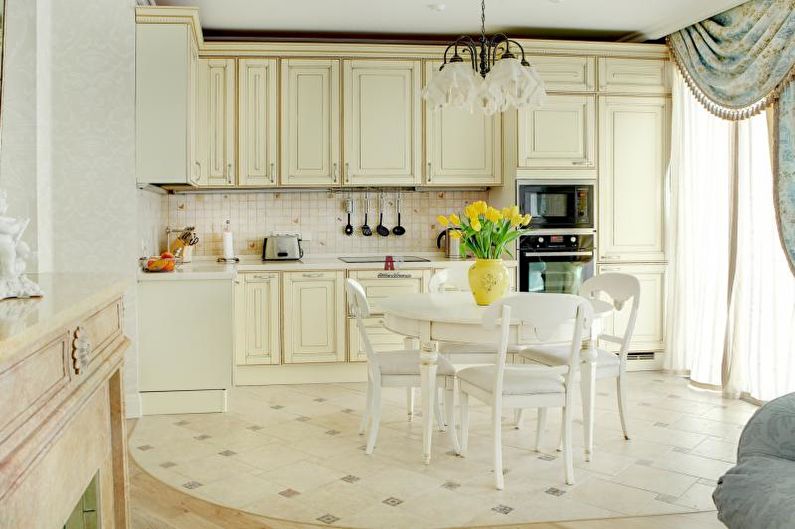
Basis for laying tiles
This is a prerequisite that must be met in order to avoid defects in the form of irregularities and heterogeneity of the structure of tiles for the kitchen.
One of the most reliable and simple styling options is considered drywall. It does not require special alignment and is tightly attached to the floor. An old tile (laying with special glue), plywood (requires special processing) and plaster (you can rely on it if the bumps do not exceed 3 mm) can be an equally good and frequent alternative.
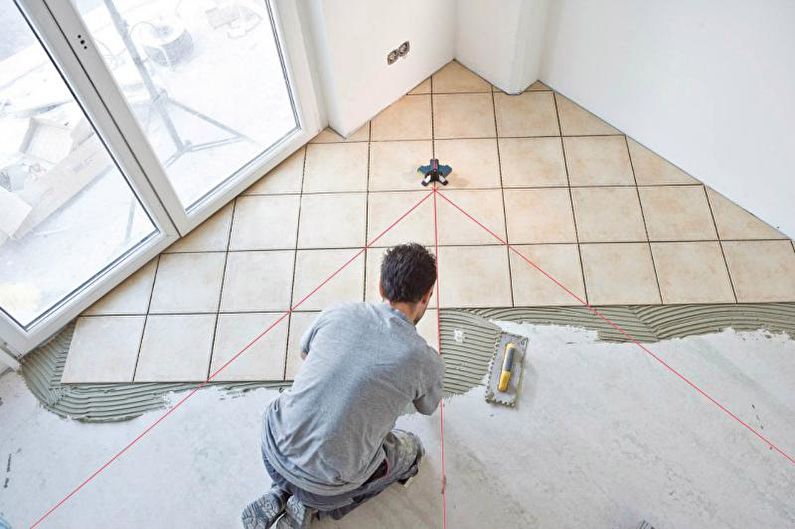
Pros and Cons of Floor Tiles
Ceramic tiles, like any other floor surface, have their own advantages and disadvantages, which you must know about before buying.
Advantages of tiles for the kitchen:
- Fire resistance. Special fire resistance allows you to be sure of the additional protection against fire in a room where there is constant contact with fire.
- Resistance to chemical influences. This property can be divided into several separate groups. For example, the value A is the maximum protection against various substances, and D is the absence of this guarantee.
- Low current conductivity.
- Water absorption. Most often, it does not exceed 3-4%.
- Durability. Components are able to withstand a variety of attempts to change the shape of the tile. This is extremely true in the kitchen, where it is not deliberate to break a plate or a vase.
- Frost resistance.
- Stylish design and a variety of colors / patterns.
The main, but minimal disadvantages of tiles in the kitchen include a higher cost (compared to other types of flooring), coldness and a thorough laying process. Despite this, the cold floor can be easily removed with the help of the built-in heating system, and entrust laying to trusted professionals.


How to choose the right tile for the kitchen
Experts recommend being especially attentive to some of the nuances that you should pay attention to when choosing a tile:
1. The image on the package. There should be a foot sign - this means that the tile is designed specifically for the floor.
2. The surface of the tile. It should be completely homogeneous. The presence of any cracks and irregularities indicates a defective product.
3. Type of abrasion. This indicator is indicated in Latin letters. High grade is responsible for good wear resistance.
4. Calculation with a margin. The number of tiles should be 10-15% more.
5. Harmonious combination with the overall design. Tiles can perfectly complement the style of the room or create interesting contrasts against the background of the kitchen.
6. Texture. The matte surface is great for a small kitchen, and the glazed one is for a large room.
7. Thickness. The optimum thickness is 9–12 mm. A thinner version will not be so durable, and a dense tile over 12 mm is ideal for utility rooms, but not for the kitchen.
8. Marking the box. It indicates the grade of tile in accordance with international standards. The highest quality - 1 grade, the lowest - 3.
9. A simple snowflake sign is responsible for frost resistance.
10. The foot, which is located on a shaded background, means high wear resistance of the material.
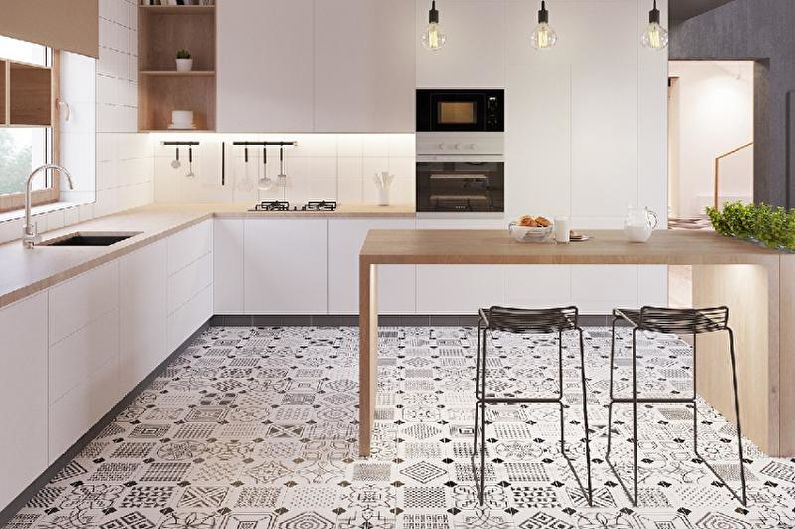
How to choose a grout color for a tile
This is one of the most important issues when choosing a floor covering. The color scheme can add up to the overall impression or complement it. One of the most popular and proven options is mosaic. She is able to create abstract elements, bright patterns or drawings. The color of the fugue and grout can merge, and can contrast, highlighting or shading some elements with others. To get the effect of an integral coating, it is enough to create a grout that will correspond to the shade of the tile (or 1–2 tones lighter), for fans of extravagance and brightness, options for zoning the surface with two or more colors are perfect. In the case of the need to highlight each tile, you need to look at the grout of darker shades. The selection criteria should depend on the type of tile, its size, as well as the desired effect.
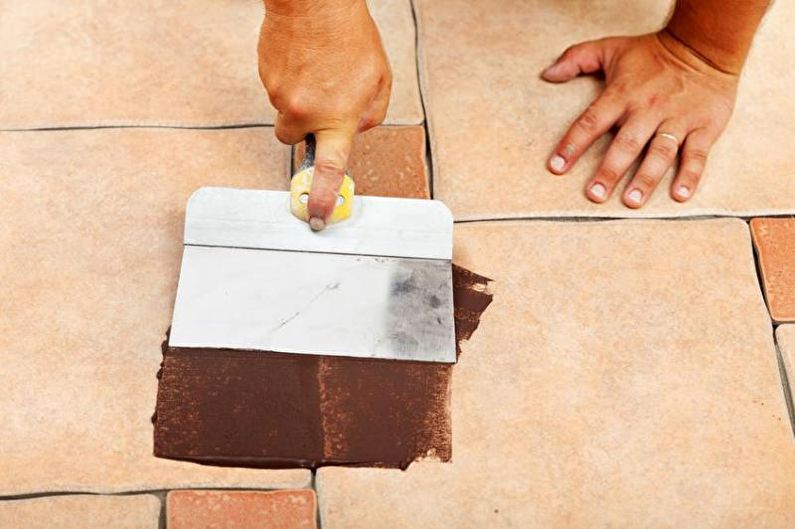
Tiles for the kitchen on the floor - photo
We have compiled a collection of interesting tiles in kitchen design that show how this proven flooring can look harmoniously, reliably and stylishly. Enjoy watching!
